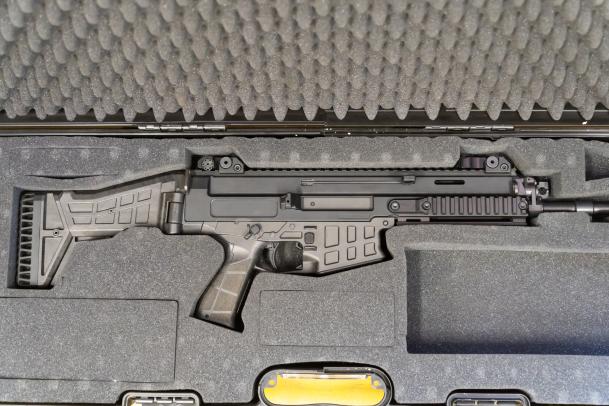

- Ref # CAB00052
- October 01, 2021
Transporting Firearms
Transporting Firearms
RC Phillips, DDA (Ret.)
October, 2021
Federal Transport Rule:
Notwithstanding any other provision of any law or any rule or regulation of a State or any political subdivision thereof, any person who is not otherwise prohibited by this chapter from transporting, shipping, or receiving a firearm shall be entitled to transport a firearm for any lawful purpose from any place where he may lawfully possess and carry such firearm to any other place where he may lawfully possess and carry such firearm if, during such transportation the firearm is unloaded, and neither the firearm nor any ammunition being transported is readily accessible or is directly accessible from the passenger compartment of such transporting vehicle: Provided, That in the case of a vehicle without a compartment separate from the driver’s compartment the firearm or ammunition shall be contained in a locked container other than the glove compartment or console. (18 U.S.C. 926A, 27 CFR 178.38.)
Plain Talk Explanation:
Some states will either recognize your concealed firearm permit, or will simply allow you to carry a loaded firearm while in their state, but some states will do neither. When travelling through restricted states you can still have your firearm in your vehicle, but you need to be aware of a few things. Federal law provides that a person, who is not prohibited by the GCA from receiving or transporting firearms, may transport a firearm under certain conditions, notwithstanding State or local law to the contrary. In order to ensure compliance with the law you must abide by the following 6 steps:
- Must be traveling:
- FROM a place where you may lawfully possess and/or carry the firearm
- TO any other place where you may lawfully possess and/or carry that same firearm
- Firearm must be unloaded
- Firearm and ammunition must be stored separately (ie. separate containers)
- Firearm and ammunition must BOTH be stored so they are NOT readily or directly accessible from the passenger compartment of the vehicle. (ie. must be in the trunk of your vehicle if possible).
- If your vehicle does not have a trunk, the completely unloaded firearm must be LOCKED in a hard sided case. The glove box or center console does NOT satisfy this requirement, the firearm MUST be stored in a separate locked case. Put the case as far away from you in the driver seat as possible.
- In order to guarantee federal protection, your transport through the state must be continuous and uninterrupted. This means you are not a tourist at any time (as a general rule you should not spend more than 24 hours inside the jurisdiction).
Whenever you are transporting a firearm through a state that prohibits your right to carry it is HIGHLY recommended that you ALWAYS store your firearm in a separate locked (hard sided) container than the ammunition, and that you store each containers in separate locations in the vehicle, preferably with the firearms in the trunk.
Once these 6 steps have been satisfied you are entitled, under Federal law, to lawfully transport a firearm in your vehicle. Some states do not require you to complete all of the above steps, but some do. Because of the extreme penalties that can accompany inadvertent mistakes, always follow these six steps to avoid any confusion and assure complete compliance to the law.
A passenger on and aircraft may transport a firearm in his or her checked baggage, so long as all TSA regulations are followed. Always abide by the following steps when traveling with a firearm, and check with your particular airline about any other procedures they may have:
- All firearms must be declared to the air carrier during the ticket counter check-in process.
- The firearm must be unloaded.
- The firearm must be carried in a hard-sided container.
- The container must be locked.
- The passenger must provide the key or combination to the screener if it is necessary to open the container, and then remain present during screening to take back possession of the key after the container is cleared.
- Any ammunition transported must be securely packed in fiber (such as cardboard), wood or metal boxes or other packaging specifically designed to carry small amounts of ammunition.
- Firearm magazines/clips do not satisfy the packaging requirement unless they provide a complete and secure enclosure of the ammunition (e.g., by securely covering the exposed portions of the magazine or by securely placing the magazine in a pouch, holder, holster or lanyard).
- The ammunition may also be located in the same hard-sided case as the firearm, as long as it is properly packed as described above.
- Black powder and percussion caps used with black-powder type firearms are not permitted in carry-on or checked baggage
Airlines may have their own additional requirements on the carriage of firearms and the amount of ammunition that you may have in your checked baggage. Therefore, travelers should also contact the airline regarding its firearm and ammunition carriage policies.
Relevant Statute: Title 49: Transportation – Part 1540- Civil Aviation Security – §1540.111 Carriage of weapons, explosives, and incendiaries by individuals.







